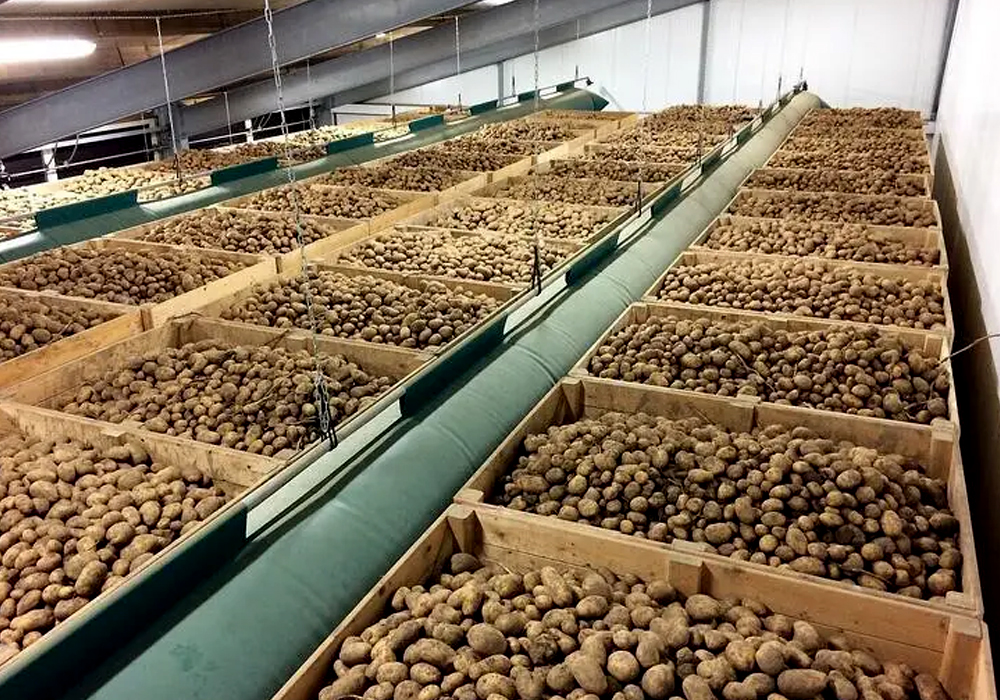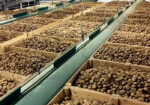The Temperature of Cold Storage for Potatoes

The Temperature of Cold Storage for Potatoes and Preserving Their Quality After Harvest is Crucial.
The temperature of cold storage for potatoes and preserving their quality after harvest is crucial. Potatoes’ tubers remain alive after harvest and interact with their surrounding environment. Therefore, to preserve the quality of the tubers during storage, the storage environment must be adjusted in a way that minimizes damage to the tubers. The temperature of the cold storage is the most important factor in preserving the stored potatoes’ quality.
If the cold storage temperature for potatoes is not suitable, the damage to the tubers increases. This is because processes such as respiration, sprouting, moisture loss, chemical composition, and disease development are all influenced by temperature. Fungal and bacterial diseases are among the most significant issues that lead to the loss of potatoes. To prevent these problems, depending on the type of stored potatoes, the storage temperature must be properly controlled.
The Most Suitable Temperature for Potato Cold Storage:
The respiration rate of potato tubers reaches its minimum at a temperature of 7.2 degrees Celsius. Therefore, the respiration rate increases both above and below this temperature. For most varieties of potatoes, temperatures below 3 degrees Celsius and above 15 degrees Celsius significantly increase respiration. High respiration rates are detrimental to storing potatoes. Therefore, temperatures below 3 and above 15 degrees Celsius are never recommended for potato storage. Consequently, the most suitable temperature for potato cold storage is the same as the respiration minimum: 7.2 degrees Celsius.
Only in some cases can the cold storage temperature for potatoes be lowered to below 4 degrees Celsius. Preventing sprouting is one such case. Sprouting of the tubers leads to increased respiration rates and consequently reduces the quality of the potatoes. Therefore, it is necessary to create a dormancy period by adjusting the cold storage temperature for potatoes. The length of the dormancy period during storage depends on the variety, temperature, and physiological age of the tubers. This period usually varies from year to year. Most varieties of potatoes go into dormancy at temperatures below 4 degrees Celsius during a storage season (up to 8 months). It should be noted that this temperature should not drop below 3 degrees Celsius.
Preventing Sweetening of Potatoes in Cold Storage:
The most influential factor affected by the cold storage temperature for potatoes is the accumulation of sugars. The accumulation of sugars affects the cooking quality and processing of potatoes. At temperatures below 7.2 degrees Celsius, the accumulation of reducing sugars leads to darkening of chips and fried potatoes. Additionally, at temperatures below 3 degrees Celsius, the accumulation of sugars is to such an extent that it affects the taste and cooking quality of potatoes.
If this happens to you and the potatoes become sweet, don’t worry! By raising the storage temperature to 13 to 15.5 degrees Celsius for 4 to 6 weeks before transportation, you can rectify this issue. It is recommended to set the temperature at 14 degrees Celsius for this purpose, ensuring it does not exceed 15.5 degrees Celsius, as temperatures above 15.5 degrees Celsius can be stressful for potato cold storage.






